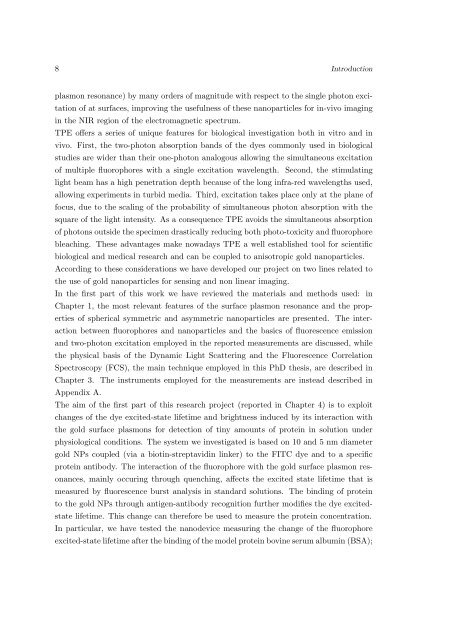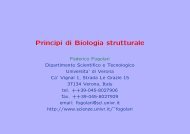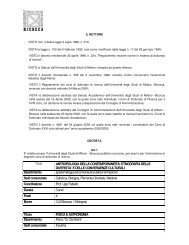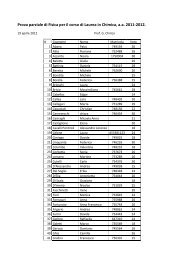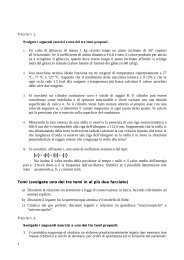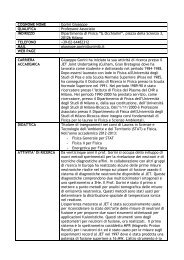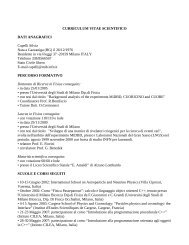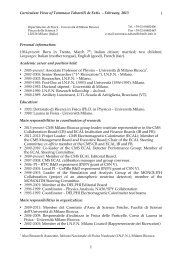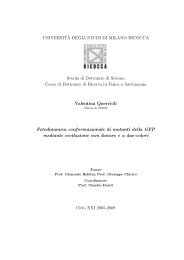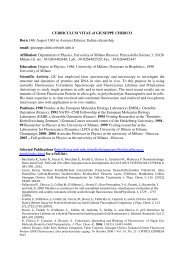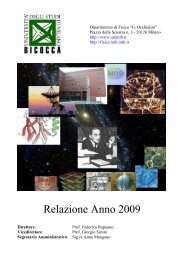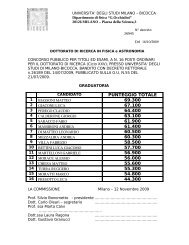Nanoparticles for in-vitro and in-vivo biosensing and imaging
Nanoparticles for in-vitro and in-vivo biosensing and imaging
Nanoparticles for in-vitro and in-vivo biosensing and imaging
You also want an ePaper? Increase the reach of your titles
YUMPU automatically turns print PDFs into web optimized ePapers that Google loves.
8 Introduction<br />
plasmon resonance) by many orders of magnitude with respect to the s<strong>in</strong>gle photon excitation<br />
of at surfaces, improv<strong>in</strong>g the usefulness of these nanoparticles <strong>for</strong> <strong>in</strong>-<strong>vivo</strong> imag<strong>in</strong>g<br />
<strong>in</strong> the NIR region of the electromagnetic spectrum.<br />
TPE offers a series of unique features <strong>for</strong> biological <strong>in</strong>vestigation both <strong>in</strong> <strong>vitro</strong> <strong>and</strong> <strong>in</strong><br />
<strong>vivo</strong>. First, the two-photon absorption b<strong>and</strong>s of the dyes commonly used <strong>in</strong> biological<br />
studies are wider than their one-photon analogous allow<strong>in</strong>g the simultaneous excitation<br />
of multiple fluorophores with a s<strong>in</strong>gle excitation wavelength. Second, the stimulat<strong>in</strong>g<br />
light beam has a high penetration depth because of the long <strong>in</strong>fra-red wavelengths used,<br />
allow<strong>in</strong>g experiments <strong>in</strong> turbid media. Third, excitation takes place only at the plane of<br />
focus, due to the scal<strong>in</strong>g of the probability of simultaneous photon absorption with the<br />
square of the light <strong>in</strong>tensity. As a consequence TPE avoids the simultaneous absorption<br />
of photons outside the specimen drastically reduc<strong>in</strong>g both photo-toxicity <strong>and</strong> fluorophore<br />
bleach<strong>in</strong>g. These advantages make nowadays TPE a well established tool <strong>for</strong> scientific<br />
biological <strong>and</strong> medical research <strong>and</strong> can be coupled to anisotropic gold nanoparticles.<br />
Accord<strong>in</strong>g to these considerations we have developed our project on two l<strong>in</strong>es related to<br />
the use of gold nanoparticles <strong>for</strong> sens<strong>in</strong>g <strong>and</strong> non l<strong>in</strong>ear imag<strong>in</strong>g.<br />
In the first part of this work we have reviewed the materials <strong>and</strong> methods used: <strong>in</strong><br />
Chapter 1, the most relevant features of the surface plasmon resonance <strong>and</strong> the properties<br />
of spherical symmetric <strong>and</strong> asymmetric nanoparticles are presented. The <strong>in</strong>teraction<br />
between fluorophores <strong>and</strong> nanoparticles <strong>and</strong> the basics of fluorescence emission<br />
<strong>and</strong> two-photon excitation employed <strong>in</strong> the reported measurements are discussed, while<br />
the physical basis of the Dynamic Light Scatter<strong>in</strong>g <strong>and</strong> the Fluorescence Correlation<br />
Spectroscopy (FCS), the ma<strong>in</strong> technique employed <strong>in</strong> this PhD thesis, are described <strong>in</strong><br />
Chapter 3. The <strong>in</strong>struments employed <strong>for</strong> the measurements are <strong>in</strong>stead described <strong>in</strong><br />
Appendix A.<br />
The aim of the first part of this research project (reported <strong>in</strong> Chapter 4) is to exploit<br />
changes of the dye excited-state lifetime <strong>and</strong> brightness <strong>in</strong>duced by its <strong>in</strong>teraction with<br />
the gold surface plasmons <strong>for</strong> detection of t<strong>in</strong>y amounts of prote<strong>in</strong> <strong>in</strong> solution under<br />
physiological conditions. The system we <strong>in</strong>vestigated is based on 10 <strong>and</strong> 5 nm diameter<br />
gold NPs coupled (via a biot<strong>in</strong>-streptavid<strong>in</strong> l<strong>in</strong>ker) to the FITC dye <strong>and</strong> to a specific<br />
prote<strong>in</strong> antibody. The <strong>in</strong>teraction of the fluorophore with the gold surface plasmon resonances,<br />
ma<strong>in</strong>ly occur<strong>in</strong>g through quench<strong>in</strong>g, affects the excited state lifetime that is<br />
measured by fluorescence burst analysis <strong>in</strong> st<strong>and</strong>ard solutions. The b<strong>in</strong>d<strong>in</strong>g of prote<strong>in</strong><br />
to the gold NPs through antigen-antibody recognition further modifies the dye excitedstate<br />
lifetime. This change can there<strong>for</strong>e be used to measure the prote<strong>in</strong> concentration.<br />
In particular, we have tested the nanodevice measur<strong>in</strong>g the change of the fluorophore<br />
excited-state lifetime after the b<strong>in</strong>d<strong>in</strong>g of the model prote<strong>in</strong> bov<strong>in</strong>e serum album<strong>in</strong> (BSA);


